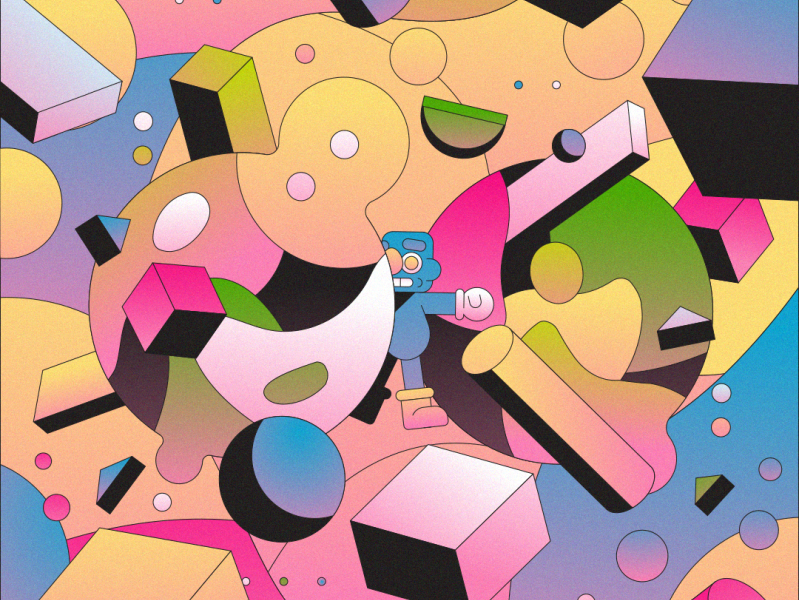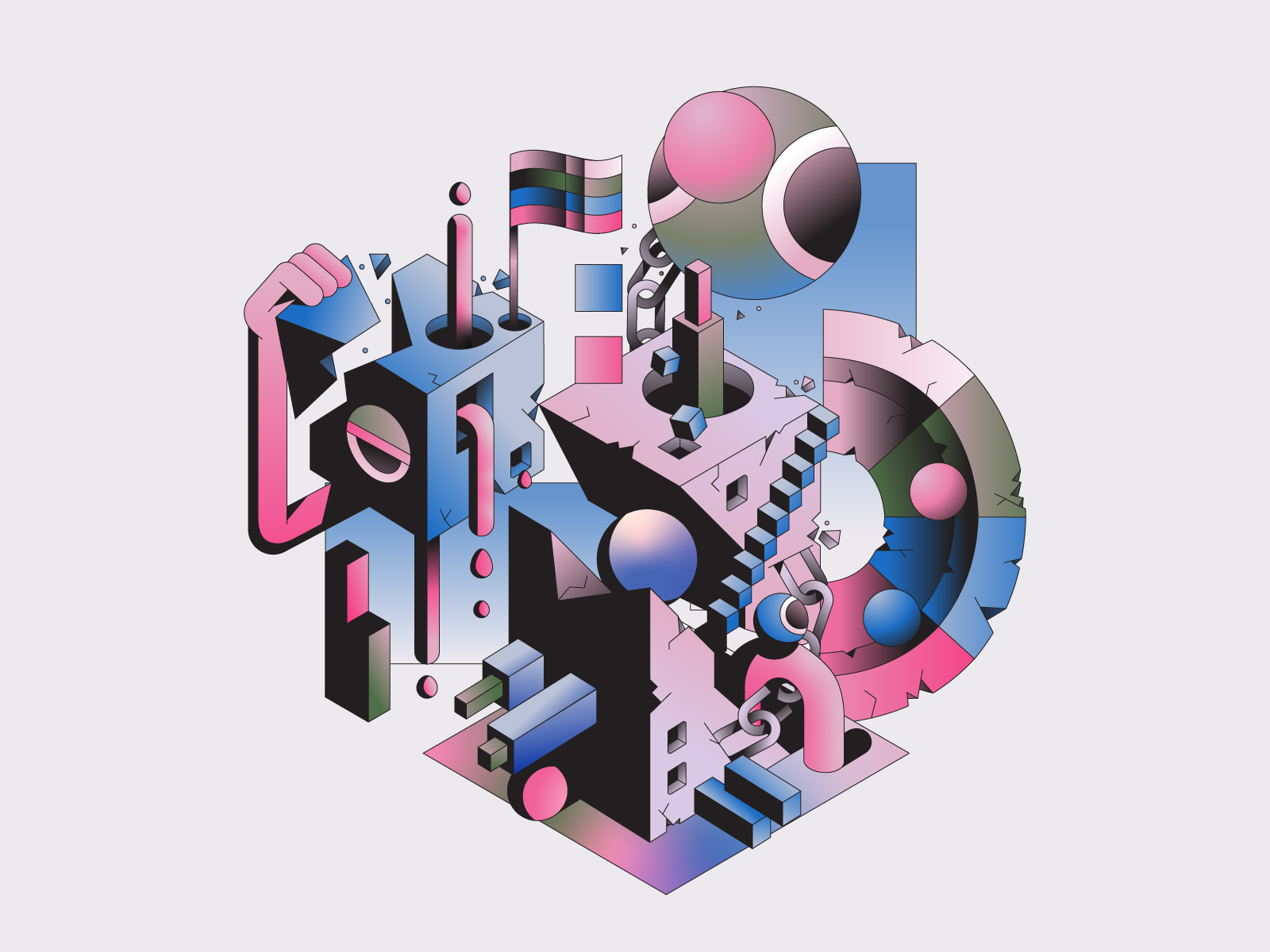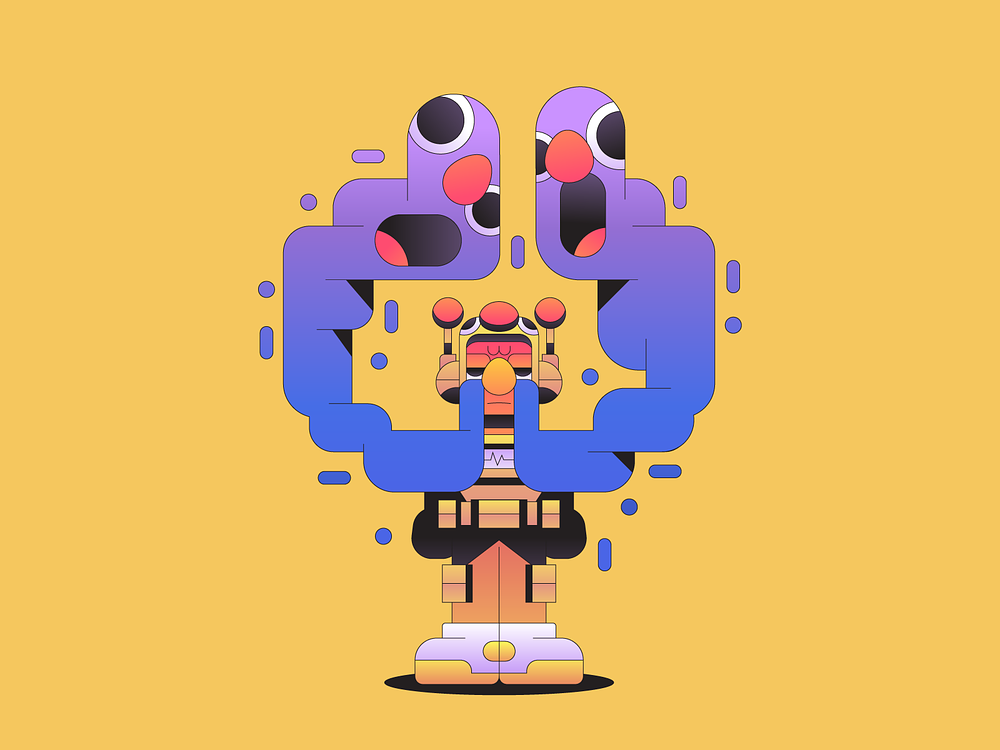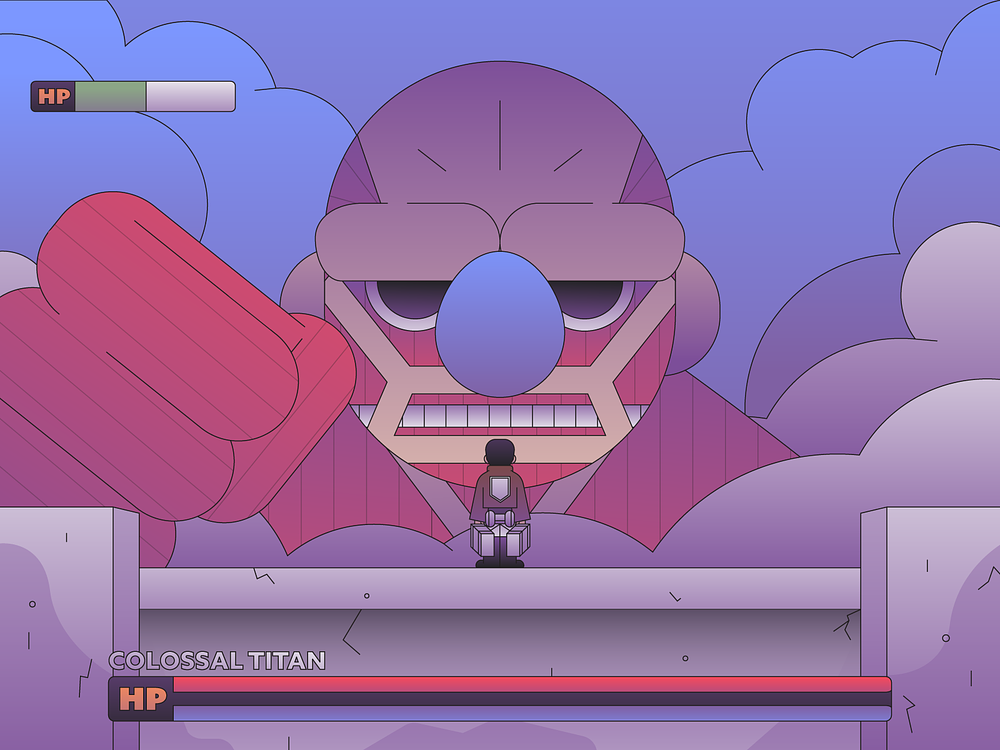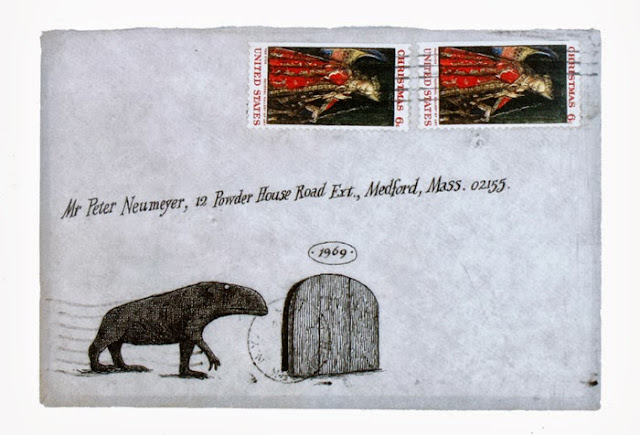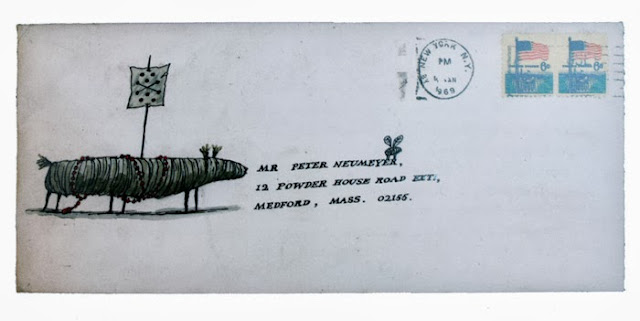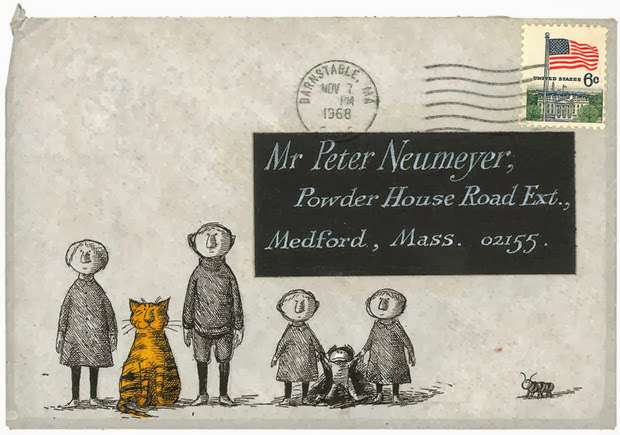Wednesday, December 30, 2020
Say It To Deface
Illustration
| Kane a.k.a. 'Defaced' from Norwich in the United Kingdom uses Adobe Illustrator and Photoshop to create outstanding surreal pieces. |
llustrator Kane a.k.a. 'Defaced' from Norwich in the United Kingdom uses Adobe Illustrator and Photoshop to create outstanding surreal pieces. —
Much of Defaced's work is inspired by games, with hit point indicators and other game aspects being presented.
"I work with shapes all day," he writes in his Dribble profile.
While most of the illustrator's work is flat, 2D imagery, some pieces do have dimensional aspects applied with simple gradients.
To hire Kane, follow this link.
SOURCE Dribble
| By kree8tiv | Embed |
Labels:
Defaced,
graphic design,
illustration
Tuesday, December 1, 2020
These Girls are Scary

Graphics
| Illustrator Oscar Llorens from Madrid, Spain creates bizarre female hybrid forms. |
Concurrent to his commercial work, Llorens has also worked extensively as a plastic artist, with individual and collective exhibitions.
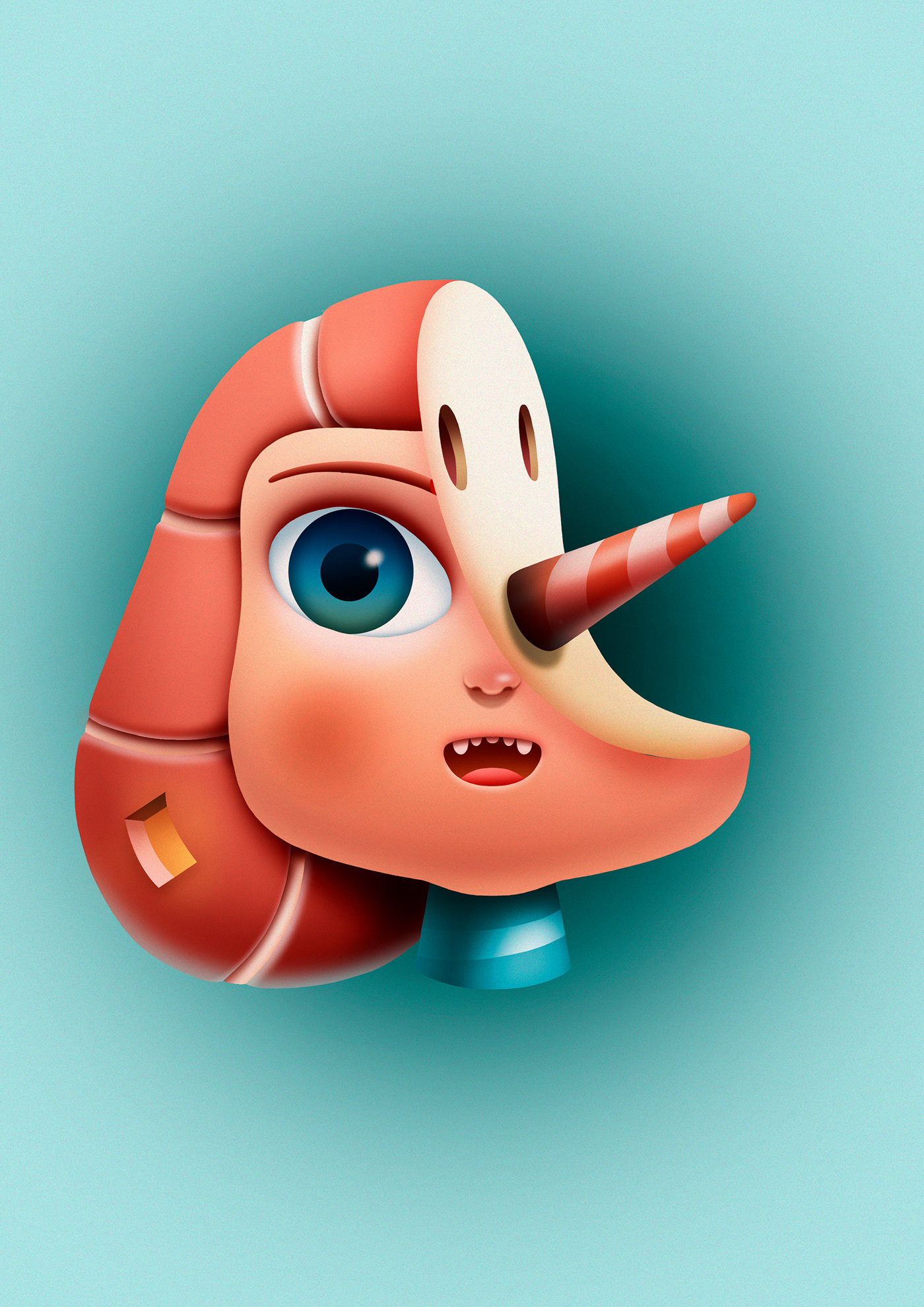
Scary Girls is the artist's latest series of illustrations, featuring surreal figures with strange facial laccerations. As he remarks on Facebook, "In this case no customer behind, just the pleasure of drawing."
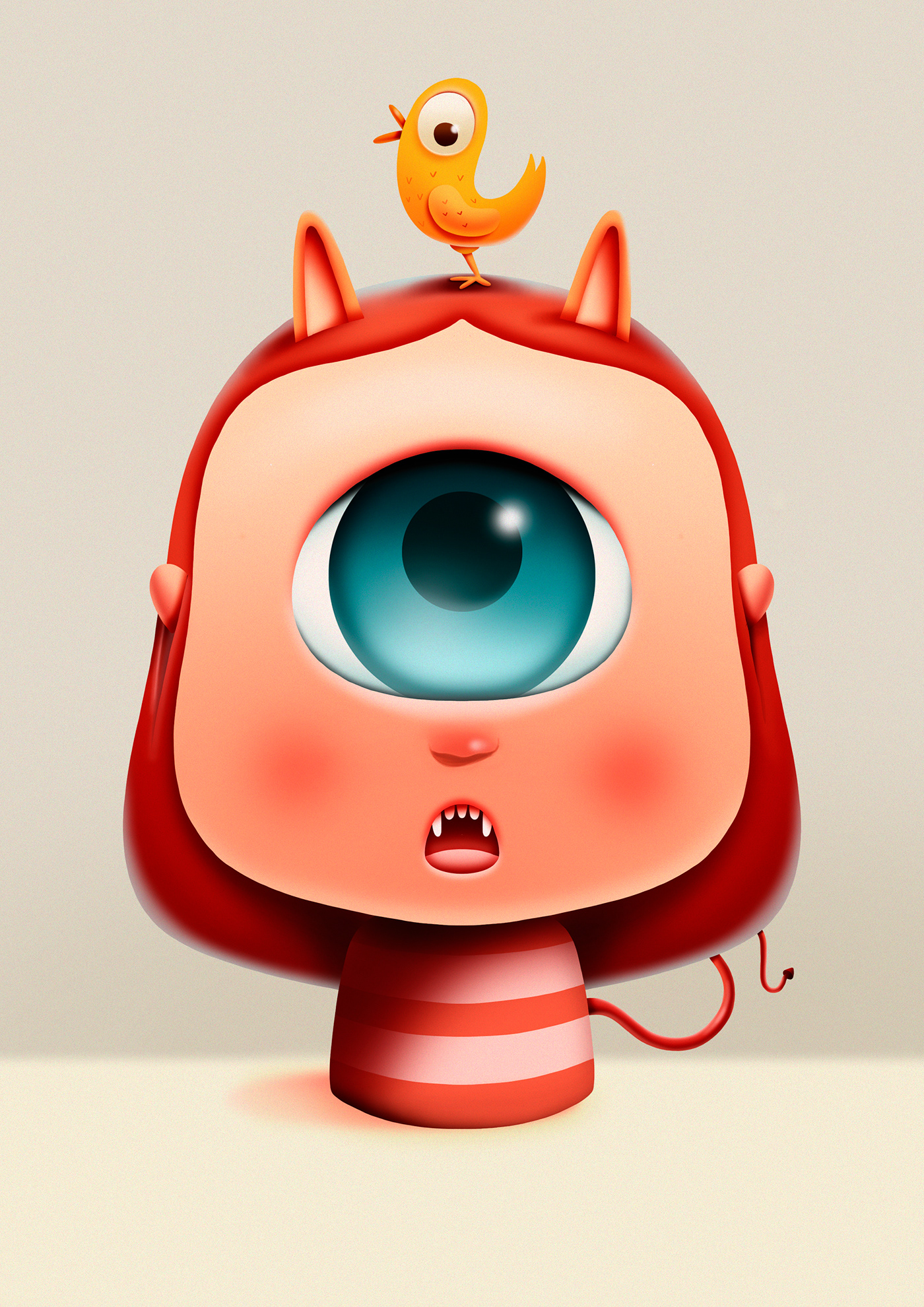

SOURCE Behance
| By kree8tiv | Embed |
Labels:
cartoons,
illustration,
Oscar Llorens
Monday, January 19, 2015
Leonardo's The Lady with an Ermine Takes Comes Alive in 3D
Art
| In a new exhibit, Leonardo3-The World of Leonardo, viewers can take in the renaissance master's work in new ways, including a portrait that comes to life. |
The animation is used in a new multimedia exhibit, "Leonardo3-The World of Leonardo," at the Piazza della Scala in Milan. Using a touchscreen, users can see the portrait moving her eyes, yawning, and caressing her little pet.
Labels:
3D,
art,
fine art,
Lady with an Ermine,
Leonardo Da Vinci
Thursday, November 13, 2014
Incredible Nano-Scale Sculptures Are 3D Printed So Small A Human Hair Is Gigantic In Comparison
| Jonty Hurwitz's nano sculptures were created using bleeding-edge technology. Too small for the naked eye to see, the sculptures were created using multiphoton lithography. |
The sculptures, “Trust”, “Cupid and Psyche: The First Kiss”, and “Intensity”, explore the idea of science vs. legend, myth vs. reality.
They were created using a ground-breaking new nano 3D printing technology and a technique called multiphoton lithography. Ultimately these works are created using the physical phenomenon of two photon absorption. As Hurwitz puts it, his art is literally created with quantum physics.
When a light-sensitive polymer is illuminated with ultra violet wavelengths, it solidifies wherever it was irradiated in a kind of crude lump. Some of you may have experienced a polymer like this first hand at the dentist when your filling is glued in with a UV light.
If however longer wavelength light is used, and focused tightly through a microscope, at the focus point, the polymer absorbs two photons and responds as if it had been illuminated by UV light. This solidifies the polymer.
Cupid and Psyche: The First Kiss

Cupid and Psyche: The First Kiss
Cupid and Psyche: The First Kiss
Cupid and Psyche: The First Kiss
Intensity
Making of Trust - 3D Scan
Trust in a Needle
"We live in an era where the impossible has finally come to pass. In our own little way we have become demi-gods of creation. "Contemporary" art, in my humble view, needs to reflect the human condition as it is today, it needs to represent the state of society at the time of its creation," states Hurwitz. "Take a moment to consider that only 6,000 years ago we were painting crude animal images on the walls of caves with rocks. We have come far. This nano sculpture is the collective achievement of all of humanity. It is the culmination of thousands of years of R&D."
SOURCE Jonty Hurwitz
| By kree8tiv | Embed |
Friday, October 17, 2014
Incredible Computer Graphics Bring Orangutan To Life
Uncanny Valley
| It is hard to believe that the orangutan, "Maya," in a new commercial for the Scottish electrical utility is a real, well trained animal actor—she's not, she's 100% computer generated. |
Labels:
cgi,
commercial,
Computer-generated imagery,
film,
graphics,
Orangutan,
Uncanny Valley
Tuesday, October 7, 2014
Infographics Designers' Sketchbooks
Books
| In Infographic Designers' Sketchbooks, more than fifty of the world's leading graphic designers and illustrators open up their private sketchbooks to offer a rare glimpse of their creative processes. |
Using a wide variety of techniques, they transform complex ideas into clear, engaging, and memorable infographics. In recent years, books and websites have been collecting the field's best. While stimulating, these finished projects offer little insight into how visual solutions were reached, making them of limited use to designers wanting to produce work of their own.
In Infographics Designers' Sketchbooks
Organized alphabetically by designer, Infographic Designers' Sketchbooks combines both breadth and depth in 352-pages. The topics span range from politics to science to pop culture to finance.
The book excels at showing how essentially dry, complex scientific information is brought to life by storybook-like infographic imagery embedded with raw data. Still, however polished the final product is and whatever data it represents, the common theme is a good old-fashioned sketch at the start.
It is incredibly interesting to go behind the scenes of a designer’s work process, through their sketches.
Author Steven Heller is the cochair of the MFA Designer as Author Department at NY's School of Visual Arts. He is the author of many books, including Graphic, Typography Sketchbooks, Scripts, and Shadow Type.
Co-author Rick Landers is founding partner and co-creative director of graphic design studio Landers Miller Design.
| By kree8tiv | Embed |
Tuesday, March 18, 2014
The Realistic Chiaroscuro Shades of DiegoKoi
DiegoKoi
| The young self-taught artist known as DiegoKoi uses outstanding pencil technique to create hyper-realistic portraits. |
In his home country, he won an award in 2011 for Best New Artist and has been gaining fame and accolades every since. With art like this, it’s easy to see why.
All of DiegoKoi's work is done by pencil. He is dedicated to the creation of figure and portrait drawings giving them a great sense of the personal. This expression comes from within each subject through sensible lines that surrounded the subject, giving rise to compact shapes and elastic form, supported by shadows and imagination.

Labels:
art,
chiaroscuro,
Diego Fazio,
DiegoKoi,
drawing,
photorealistic,
portraits
Wednesday, March 12, 2014
The Stark and Stunning Realistic Landscapes of Zaria Forman
Zaria Forman
| The photo realistic pastel drawings of Zaria Forman, record the ever-changing beauty of regions affected by climate change. |
Forman's drawings were recently used in the set design for the Netflix series, House of Cards.
Forman, from Brooklyn in New York, USA, led an Arctic expedition to the north west coast of Greenland purposely with the aim of creating art inspired by the dramatic geography.
Her mother, Rena Bass Forman, originally came up with the idea but died before her daughter could see it through, and so she promised to carry out the journey in her name.
 |
| Thompson Lake #4 25"x42", Soft Pastel on Paper, 2010 |
Labels:
art,
drawing,
Greenland,
House of Cards art,
landscape,
pastels,
Zaria Forman
Wednesday, February 26, 2014
The Art of Product Design
Design
| The Art of Product Design by Hardi Meybaum explains the rise of Open Engineering, a way of breaking down barriers and taking advantage of web-based communities, knowledge, and tools to accelerate the design and manufacturing processes. |
The book helps explain how to establish open flows of information inside and outside an organization, increasing the quality and frequency of input from different groups and stakeholders.
Friday, February 7, 2014
Joe Fenton's Incredible Surreal Graphite Drawings
Joe Fenton
| London-based artist Joe Fenton creates large drawings using graphite, ink and acrylics on paper over many weeks and months. His surreal visions examine death and the meaning of life. |
Fenton's art work is influenced by many of the early surrealists. Embracing the grotesque by his employment of Hieronymus Bosch like figures that are gangly, writhing and cramped.
Fenton also uses motifs that suggest Eastern philosophy and Middle Eastern architecture whilst maintaining a feel for European Baroque and Rococo with complex frame ornamentation and plant like details. A common theme in all his works which recurs again and again is that of death and the fear of death. The fanciful and even freakish nature of his images seem to spring from the need to distance himself from the fear while at the same time acknowledging it.
Labels:
art,
drawing,
graphite,
Hieronymus Bosch,
ink,
Joe Fenton,
Rococo
Friday, October 4, 2013
Exploring the Floating Worlds of Edward Gorey
Art
| Nowadays, receiving a hand written letter appears quaint and charming—making the newly released images of the illustrated envelopes that legendary artist Edward Gorey sent his then-editor Peter F. Neumeyer, even more enticing. |
Those letters, published here for the first time in the book, Floating Worlds
The letters also paint an intimate portrait of Edward Gorey, a man often mischaracterized as macabre or even ghoulish. His gentleness, humility, and brilliance—interwoven with his distinctive humor—shine in each letter; his deft artistic hand is evident on the decorated envelopes addressed to Neumeyer, thirty-eight of which are reproduced in Floating Worlds.
More than anything else, Floating Worlds is the moving memoir of an extraordinary friendship. Gorey wrote that he felt that they were “part of the same family, and I don’t mean just metaphorically. I guess that even more than I think of you as a friend, I think of you as my brother.” Neumeyer stated, “Your letters . . . your existence has made something of this world that [it] hadn’t the possibility of before.”
A truly prodigious and original artist, Gorey (1925-2000), gave to the world over one hundred works, including The Gashlycrumb Tinies, The Doubtful Guest and The Wuggly Ump; prize-winning set and costume designs for innumerable theater productions from Cape Cod to Broadway; a remarkable number of illustrations in publications such as The New Yorker and The New York Times, and in books by a wide array of authors from Charles Dickens to Edward Lear, Samuel Beckett, John Updike, Virginia Woolf, H.G. Wells, Florence Heide and many others. His well known animated credits for the PBSMystery series have introduced him to millions of television viewers. Gorey's masterful pen and ink illustrations and his ironic, offbeat humor have brought him critical acclaim and an avid following throughout the world.
| By kree8tiv | Subscribe to kree8tiv |
Labels:
art,
books,
Edward Gorey,
Floating Worlds,
illustration,
Peter Neumeyer
Wednesday, September 25, 2013
Box Integrates Graphics, Acting and Robotics In Brilliant Piece
Film
| What do you get when you combine robotics, projection-mapped 3D computer graphics, and an actor all working together in perfect synchronization. It's a five-minute short film called "The Box" — and it is amazing. |
The short film was produced by San Francisco-based design and engineering firm Bot & Dolly.
The creators describe the film as being both an “artistic statement and technical demonstration”, one that explores “the synthesis of real and digital space through projection mapping on moving surfaces”.
The creative director for Box is Tarik Abdel-Gawad, who also worked on the upcoming film, Gravity, controlling robotics for the complicated special effects sequences of the film.
“Box” explores the synthesis of real and digital space through projection-mapping on moving surfaces. The short film documents a live performance, captured entirely in camera. Bot & Dolly produced this work to serve as both an artistic statement and technical demonstration. It is the culmination of multiple technologies, including large scale robotics, projection mapping, and software engineering. We believe this methodology has tremendous potential to radically transform theatrical presentations, and define new genres of expression.
To create this stunning effect, Bot & Dolly used an actor, two high-resolution projectors, two 2D monitors, and three industrial robots (one for the camera) that were synchronized and controlled by integrating their own software with Autodesk Maya.
What is more amazing is that this is a live performance captured in-camera.
SOURCE Colossal
| By kree8tiv | Subscribe to kree8tiv |
Labels:
art,
Bot & Dolly,
Box,
design,
film,
graphics,
Tarik Abdel-Gawad,
video
Monday, June 10, 2013
Remembering Niels Diffrient
Design
| The iconic American industrial designer, Niels Diffrient has passed away at the age of 84. Diffrient will be remembered for his bringing ergonomics to the fore in design and for his famous Freedom Chair. |
The iconic American designer has passed away at the age of 84.
Diffrient's three-volume reference work, Humanscale, explores the relationship of spine to chair and other "human engineering" data necessary for highly specialized workplaces such as a cockpit or a truck cab, as well as aiding in the search for the perfectly comfortable place to sit down.
In the field of furniture design, most notably ergonomic seating, Niels won a total of 24 awards, including two Best of Show and 10 Gold and Top awards. Diffrient holds more than 46 design and utility patents on furniture designs in America and abroad, and his many honors include the I.D. (magazine) Top 40 Design Innovators of 1996, the 1996 Chrysler Award for Innovation, the Smithsonian’s 2002 Cooper-Hewitt National Design Award for Product Design, and the 2005 Legend Award from Contract magazine.
In the field of furniture design, most notably ergonomic seating, Niels won a total of 24 awards, including two Best of Show and 10 Gold and Top awards. Diffrient holds more than 46 design and utility patents on furniture designs in America and abroad, and his many honors include the I.D. (magazine) Top 40 Design Innovators of 1996, the 1996 Chrysler Award for Innovation, the Smithsonian’s 2002 Cooper-Hewitt National Design Award for Product Design, and the 2005 Legend Award from Contract magazine.
Labels:
chairs,
design,
ergonomics,
freedom chair,
humanscale,
industrial design,
Niels Diffrient
|
| |



